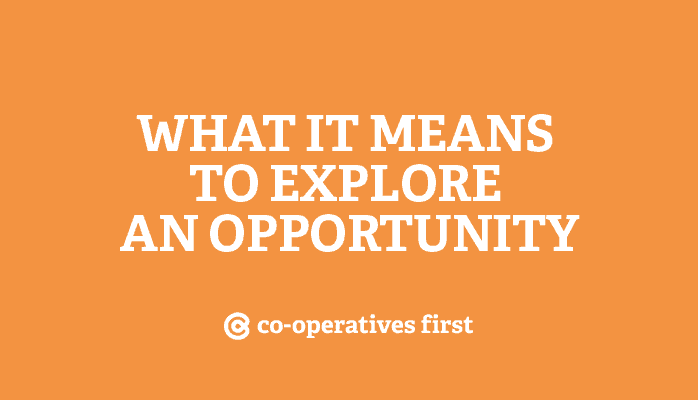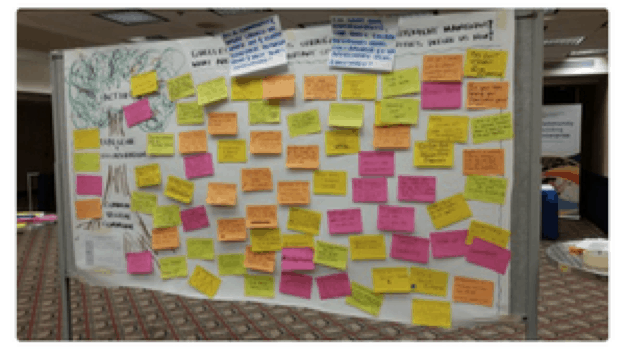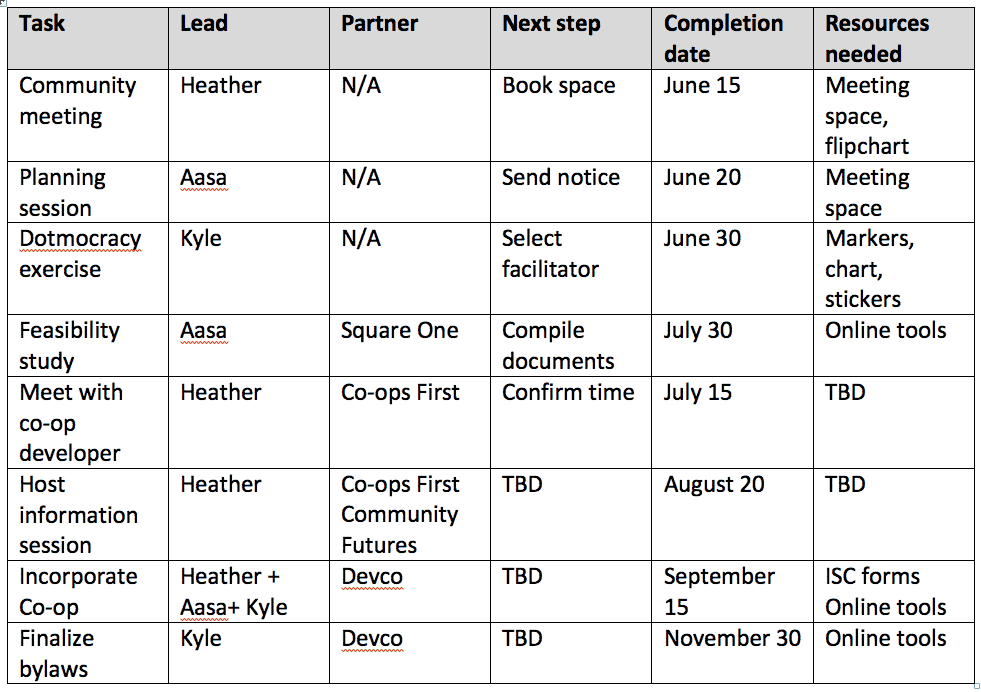Opportunity costs
It takes time and resources to explore an opportunity. It also shuts the door on what might have been had you chosen a different idea or pathway. This door shutting is what economists and MBAs call “opportunity costs.”
When exploring an idea, it’s important to understand what you are giving up in order to make your idea a reality. Yes, there are the usual costs of time, effort and money (also blood, sweat and tears sometimes). But what we mean here is the cost of not exploring an alternative solution.
A food store example
For example, you might have an idea to create a co-operative grocery store in your northern village. Perhaps there hasn’t been a proper grocery store in the region for a while, and the economic, community and social impacts of the business would be significant.
But what if, with a bit of outreach and negotiation, a major grocery chain is willing to invest in the cost of building the store, stocking inventory, promoting themselves, hiring staff and management, managing the supply chain and logistics and overhead costs of operating the store ongoing? What’s the better option – the chain or the co-op? That would need to be explored, and the answer could largely depend on the priorities of the stakeholders involved.
Alternatively, perhaps a major chain isn’t interested in the investment, so the co-op is the only option. Even amongst co-operatives there are options: do you go independent, join a federation (which is not a simple process), create a worker-owned store, or organize a market instead of a full-service store?
Likewise, there are options related to how the business is structured. If the store is going to be a central amenity in the village, there may also be opportunity in providing banking, hospitality and postal services. Why not explore the cost (and opportunity) of including them in planning a new grocery store?
A single idea contains many opportunities
A single idea, like bringing a grocery store to a small village, contains many opportunities. Taking the time to explore the idea is a good place to start – and it’s actually kind of fun.
Here’s an example of how we help groups explore an idea for a co-operative business.
Focusing Ideas
We start with focusing ideas. For co-operatives, there are often more people to work with and more ideas to draw from, and this can be a good thing. But, it’s important to discuss options related to the opportunity and prioritize next steps. Organizing like this helps manage goals, expectations and resources early on.
It’s also important for groups to engage people, giving individuals a chance to ask questions and learn more – especially those in the meeting from outside the steering committee or organizing group. This outside engagement can help increase support for the initiative and manage broader, community or market expectations once the business or organization is operational.
Creating an idea funnel
Think about your business path as a funnel that narrows as you progress towards the best ideas for realizing the opportunity. In early stages, it’s good to gather a wide array of ideas, input from community members, and identified needs. But those leading the initiative still need to find ways to focus these ideas towards a manageable project leading to a successful business.
Consider using the following structure to help shape this process:
Community or Market Participation
Connected to focusing ideas is weighing or measuring the benefits of an idea against the challenges of realizing that opportunity.
Feasibility studies or cost-benefit analyses are great tools for looking into how to balance these aspects of an opportunity; however, they can also restrict participation, which could limit the potential in the opportunity being explored. Plus, not everyone can afford them. So, we like to include more people in the discussion. Including input from the community or market the business or organization will operate in is a positive way to gain more realistic, informed ideas and initiate some early buy-in to the venture.
We recognize creating an effective forum for a large number of people to participate in a decision-making process can be daunting. Thankfully, there are different exercises that allow people to participate in fun and engaging ways, while also allowing you to capture ideas in an orderly manner. Here’s a couple ways we find works.
The dotmocracy
Dotmocracy provides participants and decision-makers an opportunity to share ideas. We like to do these in an open forum, such as a community space. The ideas are written down and posted on a large board. Different colors can be used to capture different themes. Ideas can be grouped and discussed. Individuals are then given a set number of dots and place the dots on the ideas they consider the most important.
For example, in the food store idea we mentioned above, community residents might list all the retail items they want to see in a new store. Once that’s finalized, they use their dots to select their top 3 (or whatever) picks. The ideas with the highest number of votes should move forward in the decision-making process to be discussed further. The votes may confirm the food store or may indicate that a broader inventory should be kept or even that an additional service, such as a post office, library or banking, should be included.
Impact versus Ease
Another great tool is the Impact-versus-Ease matrix. This tool helps to focus discussions of opportunities, prioritize ideas and identify ‘low-hanging fruit.’ Identifying an easy win can help motivate the group and identify a tangible product or service created or supplied by the co-op.
Ideal initiatives have high impact and ease of implementation, while those with low impact and low ease may require some re-thinking or long-term planning.
Set goals, create a plan
Once you have a manageable set of ideas, create a preliminary plan. A plan – even a rough outline – will provide direction to those leading the development and an overview of the vision and pathway forward.
Plus, planning gives the group a chance to regularly evaluate their progress, identify and allocate inputs and resources required, and adjust the timeline in way that becomes more and more accurate.
No need to make it complicated. Here’s a simple sample planning sheet:
At the end of the day …
If you have an idea, go for it. The only way it’s going to happen is if you give it a go. All we’re saying is take a bit of time to consider options, and do some planning too.
As you explore an opportunity, remember that there are supports out there to help you make it happen. From economic, business, and community development professionals, to finance partners and Co-operatives First, we all want what’s best for you and the business.
If you’re exploring an opportunity, or considering a co-op, contact us. We’re more than happy to help.

 Written by
Written by 






